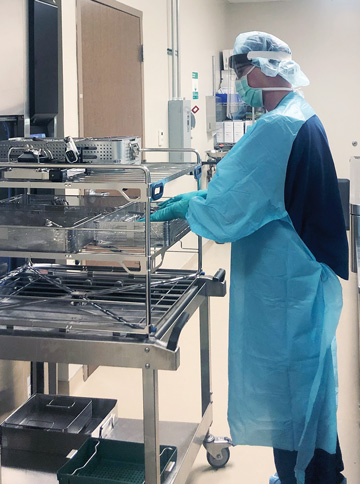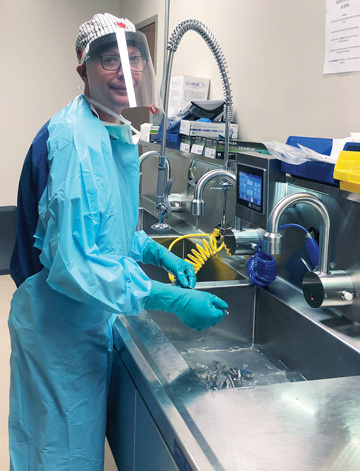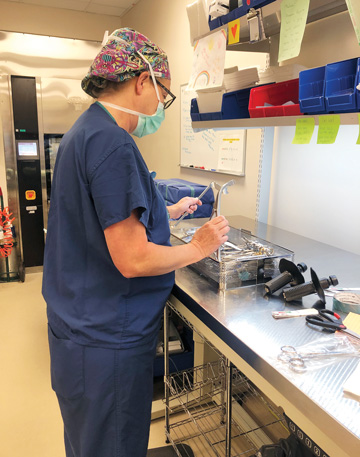Two years ago, our orthopedic surgery center launched a comprehensive total joints program. We built two ORs and added 150 instrument trays, but couldn’t expand the footprint of the sterile processing department because every square foot of new real estate was allocated for clinical space. Last year, our surgeons performed more than 10,000 procedures, including 738 total joint replacements that require up to 10 instrument trays to complete. We’ve had to work smarter and harder to reprocess 150 additional instrument sets each week. The same factors that allowed us to run a lean and mean sterile processing department before our total joints program came online have helped us handle a 50% spike in reprocessing volume and offer a blueprint that any surgical facility can follow.
• Constant flow. Surgical technicians should deliver case carts full of soiled instruments to the decontamination area at the end of each case instead of waiting until several carts are ready to be transported. “Batching” case carts seems to make sense at first blush — techs make fewer trips to the SPD — but the sporadic arrival of carts leaves reprocessing techs alternating between dealing with downtime and scrambling to keep up. A lineup of carts leads to backups and delays while reprocessing techs prioritize the multiple instruments sets for reprocessing. Delays in decontamination also allow bioburden to dry on the surfaces of instruments, making them harder to properly clean and sterilize. A constant flow of incoming instruments ultimately helps the reprocessing process move along more smoothly.
You can help coordinate the responsibilities of the reprocessing techs through constant updates on the day’s case schedule, so they can allocate their resources to prioritizing the reprocessing of needed instruments sets and get them back into circulation as soon as possible.
Our two main autoclaves run full time, but we sometimes rely on the smaller units in our “sub-steriles,” which are rooms between our ORs. We can run full cycles in them in the event our larger autoclaves are temporarily out of commission.
.svg?sfvrsn=be606e78_3)



.svg?sfvrsn=56b2f850_5)